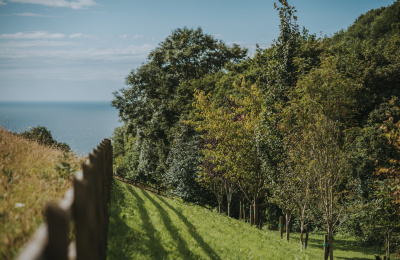Here at The Donkey Sanctuary, we strive to make the world a better place for donkeys and mules, but our sites also offer sanctuary to many other species, including bats!
At least 11 different species of bats have been recorded at the Sidmouth sanctuary, including rarities such as the barbastelle and greater horseshoe bat.
Much more noticeable are the pipistrelles (of which there are three species), those tiny flickering bats you may have spotted at dusk in your back garden. We survey bats for the same reason we survey birds and butterflies; they are sensitive to environmental change. Their presence can provide important information about the health of our environment.
Our Ecology and Conservation team study bat activity over the summer months, walking the same routes twice a month, covering a wide range of habitats such as donkey paddocks, scrub, grasslands, woodland edge and hedgerows. These Habitats provide a mixture of feeding areas for bats and features for commuting between these areas and their roosting sites.
Bats living at our Sidmouth headquarters may have benefited from lockdown last year after initial survey results found a rise in bat activity along visitor walkways.
Bats regularly commute along the hedges lining our walkways, which last summer offered a more suitable habitat after reducing cutting saw an increase in plant growth. The increase in plants, in turn, attracted more insects which may have supported higher levels of bat feeding activity.
Horror films, vampire literature, nocturnal habits and striking facial features have conspired to cast bats in a negative light. But bats are brilliant!
They play an important role in many environments, and some plants depend partly or wholly on bats to pollinate their flowers or spread their seeds, while other bats also help control pests by eating insects. Bats help our resident donkeys by munching on midges (a single pipistrelle can consume 3,000 midges a night!) that can make their life in the summer uncomfortable.
Interestingly, there were nearly five times more passes last summer by the rare barbastelle bat. Bats were frequently recorded commuting along the hedgerows and often recorded feeding where hedgerows formed junctions with others, especially if large trees were present in these locations.




